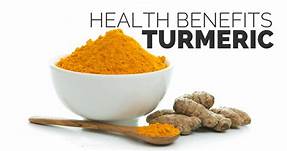
Turmeric may not be the first thing you think about putting in tea, but with the right mixture of spices, it is a delicious soothing remedy. This tuber is a well-known remedy for its benefits including digestion, immune function, the liver and even possible protection from some types of cancer.
What is Golden Milk?
Turmeric Tea or Golden Milk is a great way to get the benefits of Turmeric daily. It’s great to drink this before bed because it aids relaxation and helps boost the immune system while sleeping.
The University of Maryland Medical Center reports that it is safe to cook with Turmeric while pregnant and nursing but that turmeric supplements should not be taken without a doctor’s advice. Since this tea contains Turmeric, consult with a doctor or midwife before consuming this if you are pregnant, nursing or have a medical condition.
Turmeric Tea/ Golden Milk Recipe
Ingredients:
2 cups of milk of choice (almond, pecan, coconut and dairy all work in this recipe)
1 teaspoon Turmeric or Turmeric Spice Mix
1/2 teaspoon Cinnamon
1 teaspoon raw honey or maple syrup or to taste (optional)
Pinch of black pepper (increases absorption)
- Tiny piece of fresh, peeled ginger root or 1/4 tsp ginger powder
- Pinch of cayenne pepper (optional)
Instructions:
First, blend all ingredients in a high speed blender until smooth.
Then, Pour into a small sauce pan and heat for 3-5 minutes over medium heat until hot but not boiling.
How to Make a Dry Turmeric Tea Mix:
If you’d rather not mix up the spices each time, you can easily make a mixture of the spices and just add to warmed milk when ready.
Mix up:
1/2 cup turmeric powder
1/4 cup cinnamon powder
1 ½ teaspoons ground black pepper
1-2 Tablespoons ground ginger
1/2 teaspoon of cayenne (optional)
Then, just add 2 teaspoons of this mix to 2 cups of milk of choice for a faster recipe.
Or, Make Turmeric Paste
Golden Paste:
1/2 cup organic turmeric powder
1/2 cup clean water (no fluoride)
1 1/2 teaspoon black pepper
5 Tablespoons virgin coconut oil
In a stainless steel pot cook together: Water, turmeric and black pepper until it forms a thick paste, stir and cook for 7 to 10 minutes. Remove from heat and add virgin coconut oil, using a whisk to fully mix in the coconut oil. Finally, transfer to a glass jar with a lid and store in the refrigerator.
Golden Milk:
1 tsp. Golden Paste
2 cups Almond Milk or Coconut Milk
1/8 teaspoon Vanilla (Optional)
Molasses to taste.
Pinch cinnamon (Optional)
In a stainless steel pot-gently heat, but do not boil, milk with 1 teaspoon paste. Use whisk
Add molasses and vanilla and cinnamon to taste.
Notes:
This may stain blenders and counter tops. The color isn’t harmful and will eventually fade. Recipe can be halved or doubled if needed.
Curcumin:
This bright yellow spice contains Curcumin (up to 3% by weight), which has been well studied for its benefits. It is believed to halt an enzyme that may be responsible for turning environmental toxins into carcinogens in the body. Turmeric is a folk remedy for helping protect the body from the affects of smoking or chewing tobacco.
Curcumin may also improve digestion of fats and sugars and help alleviate inflammation in the digestive system. It is an age-old skin remedy and is even used in the mouth to help alleviate gum problems.
Of course, Turmeric can be added to foods and is a great base for many spice blends, but those who want to consume it as a remedy often turn to turmeric tea.















